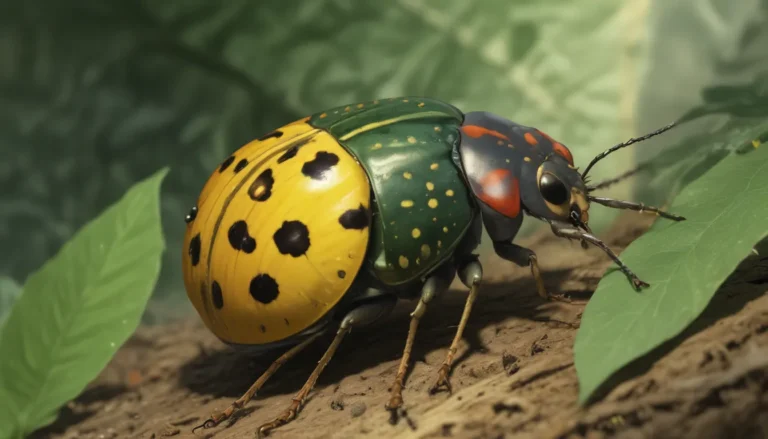Ultimate Guide to Managing a Spotted Lanternfly Infestation

Spotted Lanternfly (SLF), scientifically known as Lycorma delicatula, is a dreaded invasive planthopper causing havoc in the Mid-Atlantic region. Originating from China, this pest poses a significant threat to various economically important plants, such as grapes, fruit crops, and hardwood trees.
What You’ll Learn
- US Invasion of the Spotted Lanternfly
- Easy Transport via Motor Vehicles
- Identification, Life Cycle, and Biology
- Host Plants
- Symptoms on Plants
- Honeydew: Why It’s a Problem
- How Homeowners Can Manage Spotted Lanternflies
US Invasion of the Spotted Lanternfly
The first sighting of L. delicatula in the US occurred in Pennsylvania in September 2014, but experts believe it may have been present for three to four years before its official discovery. As of May 2019, 14 counties in eastern Pennsylvania were under quarantine due to infestation, covering an area of at least 3,000 square miles.
Easy Transport via Motor Vehicles
One of the main reasons for the rapid spread of the spotted lanternfly is its ability to lay eggs on various surfaces, including the wheel wells of cars. To prevent inadvertent spread, quarantine zones require permits for carriers transporting wood, plants, and other items. Vigilance is essential to avoid transporting this pest unintentionally.
Identification, Life Cycle, and Biology
Adult spotted lanternflies are characterized by their black bodies, gray wings with black spots, and bright red lower wings with black spots. Females lay distinctive egg masses on various surfaces, which overwinter until hatching in April or May. Nymphs go through four stages, with the final phase exhibiting bright red coloration.
Host Plants
Spotted lanternflies infest over 70 plant species, including the tree of heaven, oak, sycamore, and fruit crops like grapes and apples. Understanding the host range of this pest is crucial for implementing effective control measures.
Symptoms on Plants
These insects feed on sap from branches, trunks, twigs, and leaves, causing wounds that result in oozing sap, wilting leaves, and dieback of branches. The secretion of sugary honeydew attracts stinging insects and promotes the growth of sooty mold, which can damage crops and vegetation.
Honeydew: Why It’s a Problem
The presence of honeydew attracts yellowjackets, hornets, ants, and promotes the growth of sooty mold, which can reduce crop yields and affect plant health. Managing honeydew production is essential to prevent further damage by the spotted lanternfly.
How Homeowners Can Manage Spotted Lanternflies
Residents living in quarantine zones can take proactive steps to manage spotted lanternfly infestations on their property. Implementing strategies such as not transporting infested items, destroying egg masses, banding trees to trap nymphs, and removing preferred host plants are crucial in controlling the spread of this invasive pest.
Here are some effective strategies for homeowners to combat spotted lanternfly infestations:
1. Don’t Transport Them!
- Check for egg masses on various surfaces, including your car’s wheel wells.
- Avoid parking under infected trees or storing items near them.
- Refrain from transporting firewood or outdoor items that may harbor egg masses.
2. Destroy the Eggs
- Identify and remove egg masses using solutions like rubbing alcohol or soapy water.
- Double bag and properly dispose of removed egg masses to prevent hatching.
3. Band Trees to Catch the Nymphs
- Wrap tree trunks with sticky tape to trap nymphs walking up to feed.
- Monitor and replace sticky tape regularly to effectively capture spotted lanternfly nymphs.
4. Remove Trees of Heaven and Other Preferred Hosts
- Eliminate tree of heaven and other preferred host plants to reduce spotted lanternfly populations.
- Seek professional assistance to safely remove and treat infested trees.
5. Chemical Controls
- Utilize insecticides for targeted control of infested trees and plants.
- Be cautious while applying insecticides to avoid harming beneficial insects and the environment.
6. Create a Trap Tree
- Establish a bait tree treated with systemic insecticide to attract and eliminate spotted lanternflies.
- Remove female tree of heaven plants to reduce reinfestation potential and lure flies to trap trees.
Avoid using home remedies that may be ineffective and potentially harmful to plants, animals, and the environment. Rely on proven strategies recommended by experts for effective spotted lanternfly control.
Growers on the West Coast Are Bracing for an Infestation
California and other western states are preparing for the potential spread of spotted lanternflies, conducting research on biocontrol agents and implementing proactive measures to prevent infestations. High-value crops such as grapes, walnuts, avocados, and pistachios are at risk, prompting stakeholders to take preventive action against this invasive pest.
A New Invasive Species
The spotted lanternfly poses a significant threat to agricultural and natural ecosystems, highlighting the importance of early detection and effective management strategies. Citizens in affected and at-risk areas play a crucial role in preventing the spread of this pest and safeguarding valuable crops and plants.
Stay alert for spotted lanternfly sightings and report any findings beyond quarantine zones to prevent further infestations. By staying informed and taking proactive measures, homeowners and growers can effectively combat this invasive species and protect the environment.
Do you reside in a spotted lanternfly quarantine zone? Share your experiences and insights on managing this invasive pest in the comments below.
For more information on emerging insect infestations and effective control measures, explore articles on related topics such as the spotted wing Drosophila and the Asian citrus psyllid spreading citrus greening disease.
By incorporating detailed information, practical tips for homeowners, and insights into the impact of spotted lanternflies on agricultural regions, this comprehensive guide provides readers with a valuable resource for managing infestations effectively. With a focus on education and prevention, homeowners and growers can take proactive steps to combat this invasive pest and protect their plants and crops.





